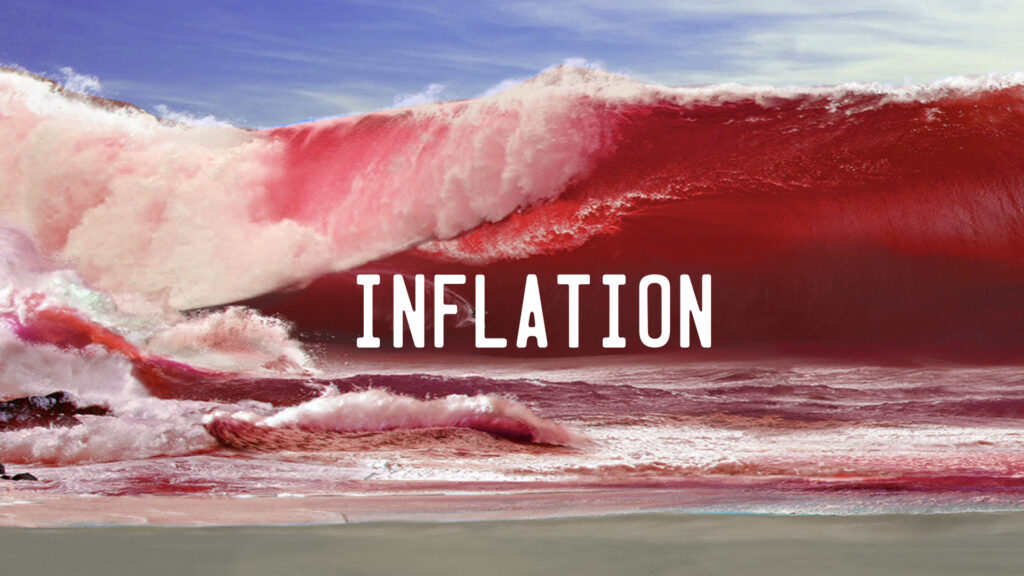Several economic indicators point to a second wave of inflation
The latest CPI inflation report was disappointing. March’s Consumer Price Index came in much hotter than anticipated. The annual rate of inflation increased by 3.5% in March. That’s a significant increase from February’s 3.2% rate. With the cost of fuel, and groceries still climbing, and mortgage rates at a 23-year high, there’s no sign of inflation retreating which has led many economists to believe the Federal Reserve may not cut rates at all this year.
Now let’s look at where we find ourselves today.
Beginning in the spring of 2022 the Federal Reserve embarked on a record-setting series of interest rate hikes to curb inflation and to date, those rate hikes and reducing the Fed’s balance sheet have worked- to a point. However, with home prices stubbornly stuck near-record highs in most markets, and high mortgage rates a key component of Core- inflation remains problematic. Rents and the owner’s equivalent comprise 40% of the Core Consumer Price Index. However, the core CPI does exclude more volatile goods such as food and fuel. Coupled with rising fuel costs in the overall CPI inflation could become entrenched.
Despite the Fed’s efforts inflation could push even higher. Why? Two words: government debt.
The federal government will soon have to roll over debt that was much cheaper into new debt at much higher interest rates they can barely afford.
This leaves the government with two choices: to default or have the Federal Reserve begin quantitative easing- or money printing. Ultimately our debt is monetized in one of four ways: Borrowing the money by issuing Treasury bonds, printing more money (quantitative easing), increasing taxes, and lastly and least likely, reducing spending. When the debt is monetized with quantitative easing the federal government pushes that cash into the economy which further accelerates the rate of inflation. And here’s something to consider. Our federal government’s spending is so out of control that even the International Monetary Fund or IMF issued a warning last Wednesday that US spending and surging debt is adding stress and volatility to other markets across the global economy.
Today we face a dilemma similar to what economists called The Great Inflation in the 1970s. Then much like today, politicians placed the blame on oil prices, speculation, and greedy corporations. However, ultimately economists could point to the federal government’s massive deficit spending and budget deficits as the true culprits.
The Fed may claim political independence from the White House and Congress, but history has shown that’s not always the case. In early 1970 President Nixon fired the current Fed Chair and replaced him with Arthur Burns, with whom he had worked together in the Eisenhower administration. After hiking the Fed Funds Rate between 1972 and 1974 Burns reversed course the following year facing a steep recession and high unemployment.
Unfortunately, cheap money and lower interest rates were followed by another surge of inflation. What followed was a period of stagflation with persistent high inflation and high unemployment coupled with a stagnant economy.
Could we find ourselves on a similar trajectory? Overlaying the CPI index’s growth from 1966 to 1982 over 2014 to 2024 we see a familiar pattern. The Fed raises rates to curb inflation, unemployment rises, and the central bank cuts rates to stimulate the economy, followed by accelerated inflation.
In conclusion, now more than ever older Americans will need to look to all their assets, including their home, to weather an uncertain economy and sustained inflation. Yes, our penetration of age-eligible households remains low, but increasing economic pressures could lead many to reconsider a reverse mortgage.







4 Comments
Great comments.
Thank you, David.
Of course, 1972 – 1974 was at the end of the LBJ misadventure and RMN expansion into Vietnam. So what is driving our overheated economy now? It seems a spend thrift JRB (President Joseph Robinette Biden, Jr.)
I’ve always liked your point of view. Here I probably agree with you but would mind elaborating with a few specifics?
I feel that our downward spiral started with our Iraq escapades.